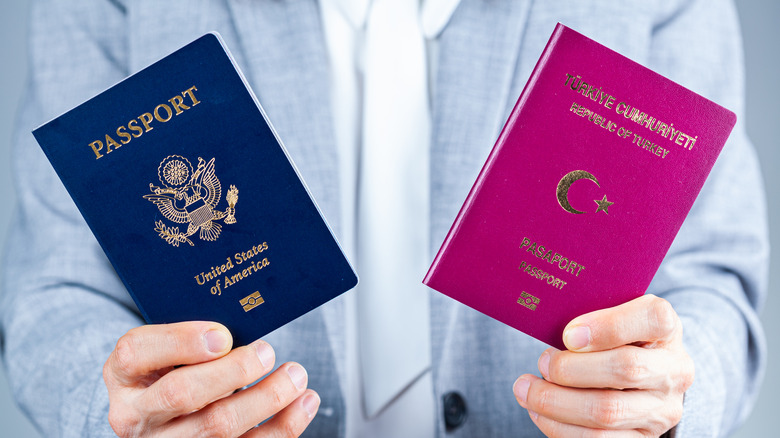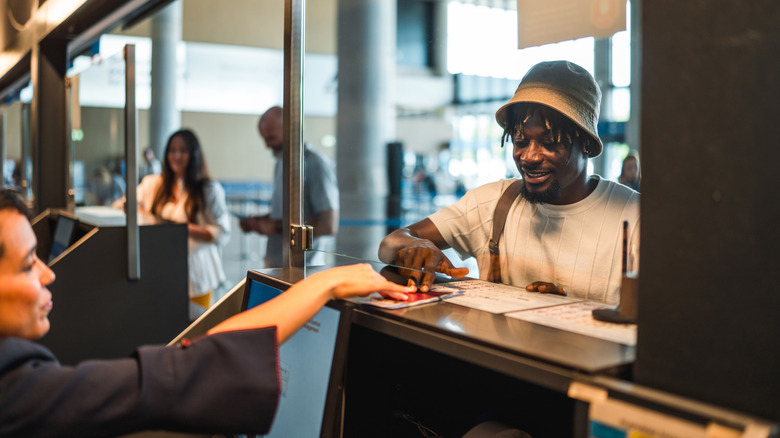How To Get The Most Out Of Both Passports At The Airport If You Have Dual Citizenship
Having dual citizenship when traveling is rarely, if ever, a negative. As a dual citizen with two passports, you may have more privileges in certain countries than someone who only has one, especially if you're holding Europe's most powerful passport for 2025. One of the only downsides to having two passports is figuring out how to use them effectively while traveling. Fortunately, you can easily navigate this dilemma by learning a few key approaches when exiting and entering countries.
The most important thing to remember is that whichever document you use to enter a foreign country, you must use the same passport when leaving that country. While Croatia has an all-new travel entry process that ditches passport stamps, it's always important to use the same document the country has on its system, stamp or no stamp. Using a different one could cause unnecessary dramas and delays when exiting. If America is one of your two citizenships, you'll also need to always show your U.S. passport when entering or exiting the country. This is actually a legal requirement for all citizens, so it's really important not to forget.
However, if you're traveling to Europe and have both U.S. and Italian citizenship, for example, you would use your U.S. passport when leaving America, then your Italian one upon arrival in Europe. On the way home, you would use your Italian passport when exiting Europe and your U.S. documents when re-entering America. Your U.S. passport limits you to only 90 days within the Schengen Area (comprised of 27 European countries) without a visa, while your Italian citizenship grants you unlimited visa-free time and travel. It also grants you other rights within the EU, including traveling with pets. The same process typically applies when traveling to many other countries around the world, provided you have the relevant citizenship.
Passport considerations for airlines versus border control
How you use your two passports with airlines will differ slightly from border control. As mentioned, the one you show at customs will be based on a country's legal requirements or benefits. This passport can be different from the one you show to the airline, if it helps with your travels. However, when it comes to the airline, the document that you used to check in needs to be the one you show when boarding your flight. If your passport doesn't match the one on your ticket when boarding, you might have to deal with unnecessary questions and delays.
This can be tricky if you've got multiple legs in your journey — it's easy to get tangled up on which passport to use when. The main thing to remember is to ensure your details are always up to date and correct with the airline. You should also always carry both with you when traveling. Not only does this allow you to show the required one when prompted, but it also gives you greater access to embassy support and will make re-entry a lot easier. With that said, you should only ever show one passport at border control. Handing over both will only slow down the entry process.
It's important to remember that not all countries have the same entry and exit requirements. Some countries may require an exit visa, even if you're a citizen. Others may require you to inform them of your other citizenship when entering. So it's always wise to research your arrival country for any special requirements before traveling. If your bag gets stolen or you lose one of your documents, here's the easiest way to replace your lost passport while in another country.

